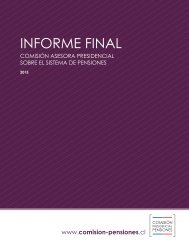ANNUAL
Scientific-American-world-view-2016
Scientific-American-world-view-2016
You also want an ePaper? Increase the reach of your titles
YUMPU automatically turns print PDFs into web optimized ePapers that Google loves.
THE STATE OF INNOVATION<br />
“I predict a 50% worldwide conversion from batch to continuous<br />
manufacturing in the small molecule area within<br />
the next 10 to 15 years, with $300 billion worth of products<br />
made from continuous manufacturing methods each<br />
year,” says Fernando Muzzio, director of C-SOPS.<br />
Muzzio believes that continuous manufacturing’s<br />
transition to biotech could be just around the corner.<br />
“Continuous manufacturing is like an orchestra where<br />
every instrument is playing from the same script, and to<br />
make that transition over to biotech would be enormous.”<br />
He explains that all of the benefits researchers are currently<br />
achieving from the continuous manufacturing of small<br />
molecules can also be applied to biomolecules by expanding<br />
the template or paradigm.<br />
The New Jersey Turnpike is lined with exits that lead<br />
to flourishing centers of innovation like C-SOPS. Cruising<br />
past the diners and smokestacks, we quickly discovered<br />
that the Garden State’s hidden biotech hotspots are driving<br />
the industry toward a brighter future—no stopping or<br />
standing allowed.<br />
P.K.: That’s right. The reason I mention<br />
these, just a few of these examples,<br />
is because they don’t require us to have<br />
a whole new tranche of money. I am<br />
still a big advocate for more money<br />
for NIH, and my overall message to<br />
BioNJ and to others would be for us<br />
to have a “brain bond,” a savings bond<br />
for disorders that are the most crippling,<br />
disabling disorders to not only<br />
people but to our country. To bend the<br />
cost curve in the next few decades, we<br />
need to start tomorrow, and the way<br />
to do that is to pretend that we’re in a<br />
war. Nothing is going to wreak a bigger<br />
cost on our national security and<br />
our economy than our people being<br />
taken out by these brain illnesses. So<br />
if we treated it like the crisis that it<br />
is, we would do these savings bonds,<br />
these patriot bonds. We’ve got to win<br />
at all costs and that’s why I would say<br />
we need new financing mechanisms<br />
beyond the federal budget.<br />
We would tap these new mechanisms,<br />
like these social innovation<br />
bonds, and we could repay these bonds<br />
simply by reducing the costs associated<br />
with treating these disorders. You<br />
could reallocate the savings begotten<br />
from reducing the costs and the disability<br />
associated with these disorders<br />
to pay for the underlying bond.<br />
Still, we have a capitalist system.<br />
The only way we’re going to get people<br />
to invest in this space is to have intellectual<br />
property, and you’ve got to be very<br />
sensitive to how we protect that while<br />
maximizing data sharing. We just have<br />
to be very good at being a gatekeeper<br />
for who gets to interrogate the science<br />
and how they get to contribute to the<br />
clinical research findings.<br />
At One Mind, we invite the best<br />
and brightest to look at our data as<br />
we’re developing them, and then they<br />
become part of the research because<br />
they are able to give valuable feedback.<br />
If they come up with some valuable<br />
insight, well, then you can track<br />
it and you can negotiate it with them<br />
ahead of time to say that, “If you add<br />
some value to this, we’re going to negotiate<br />
your remuneration for that<br />
value.” That’s a better way to go than<br />
everybody husbanding their data and<br />
not realizing the data’s potential, because<br />
no one bothered to connect<br />
this data with that data. That happens<br />
because everybody is so afraid that<br />
they’re going to give up their IP, but<br />
the IP might lie in the fact that you’re<br />
overlaying this data with that data.<br />
That’s where the real value comes.<br />
THE STATE OF INNOVATION: NJ 75




